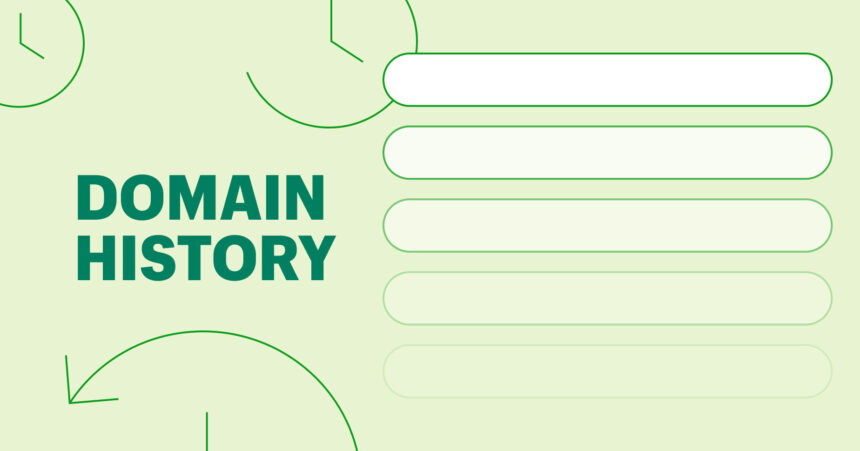If you’re an entrepreneur, business owner, or just someone familiar with the history of the internet, it’s helpful to know how to dig into domain name history. Domain name history sounds more complicated than it actually is. Entering a domain name into a text field can reveal a lot of information about your business. Here’s how domain name history works and how to find it. For free.
Notes: If you came to this article because you wanted to know what a domain name is and what it actually does, then There’s a guide for that too,and How to register your own domain.
Why check domain history?
Domain name history provides a lot of information that you can’t get by just looking at an existing website.
Competitive research
You can learn a lot about your competitors by looking at their domain and website history. How long has that domain been around? Has that domain been sold before? How much was that domain worth? Answering these questions can give you deep insight into the value of a particular domain.
From there, you can begin to develop your own marketing and SEO strategy, taking into account the strengths and weaknesses of your competitors.
Buying Aftermarket Domains
Maybe you Buy your own domainBut you know that the domain you have in mind is pre-owned, and looking into the domain’s history can tell you what kind of reputation it has with search engines and email services (which can affect your website’s discoverability and communications, respectively).
Buying an existing website
Perhaps you are looking to purchase an entire website. By looking at the history of the website that is for sale, you can get a clear idea of how popular the website has been in the past, how many sales it has made, and if people have had good experiences with the domain in the past.
Contact the website owner
If you fill out a website’s contact form, you may not get a response. If you need to get in touch with the website owner directly, such as to purchase a domain or get information about a product you ordered, you can identify the right person to contact by looking at the domain’s history.
Ensuring security
Checking the history of a domain name can help you spot scammers, spammers, and fraudsters. If you are considering doing business with a company and have doubts about their business practices, check their domain to see if their website has been associated with news of scams or excessive marketing efforts.
How to Check Domain History with WHOIS
Important Domain Name History Tools WHOIS LookupSimply put, WHOIS is a system for looking up domain name owner information. By default, every domain name is automatically associated with the owner’s full name and contact information.
You can also find out which company a domain is registered to, which can be helpful in resolving domain-related disputes. (By the way, if you want to buy a domain after you’re done here, check this list. Best Domain Registrar.
There are two main types of WHOIS lookups: a basic details search and a history search which provides more detailed information. Basic A WHOIS lookup will only show you the current status of your domain, where it is registered, what server it is connected to, and other relevant information relevant to your current situation. history On the other hand, lookup shows all that information, past Registrars, servers, owners.
Essentially, every major change to a domain name is tracked in the WHOIS history, and it can all be seen with the right tools.
How to Perform a Basic WHOIS Search
A basic WHOIS lookup will only show you the current status of a domain, but it’s a useful start. Here’s how:
1. Find a WHOIS Lookup Service
Quickly and easily look up current ownership data Shopify.
2 Enter the domain name in the search field
In this tutorial, ManitobaAn online store selling shoes designed by Native Canadians.

3. Check the results
These results will show you the current status/registrar of manitobah.com, the date the domain was created, the name servers it is connected to, and additional information that you can see in the screenshots.

How to Find the WHOIS History of a Domain
A similar process is required for searching WHOIS history. wish list A simple search or Wikipedia Use it if you want more detailed information. DomainIQ also provides great looking reports.
Note: WhoisRequest.com only offers 10 free searches per day, but has the simplest UI. Whoxy.com offers unlimited free searches and only charges if you integrate the service into your own app.
Domain IQUnfortunately, we only offer one free domain lookup per day. Really If you want a good looking report on a specific domain, use domainIQ to create the report.
The process is as follows:
1. Visit the site of your choice
Here are some quick links that will take you directly to history search options:
2. Enter your domain name

3. Check the information
If you don’t have a domainIQ account, you may need to enter your email address to view the full report.

This particular domain has only had one owner, so you see it all here: Meanwhile, in this screenshot from Whoxy for cars.com, you can see several different owners listed in the domain history.
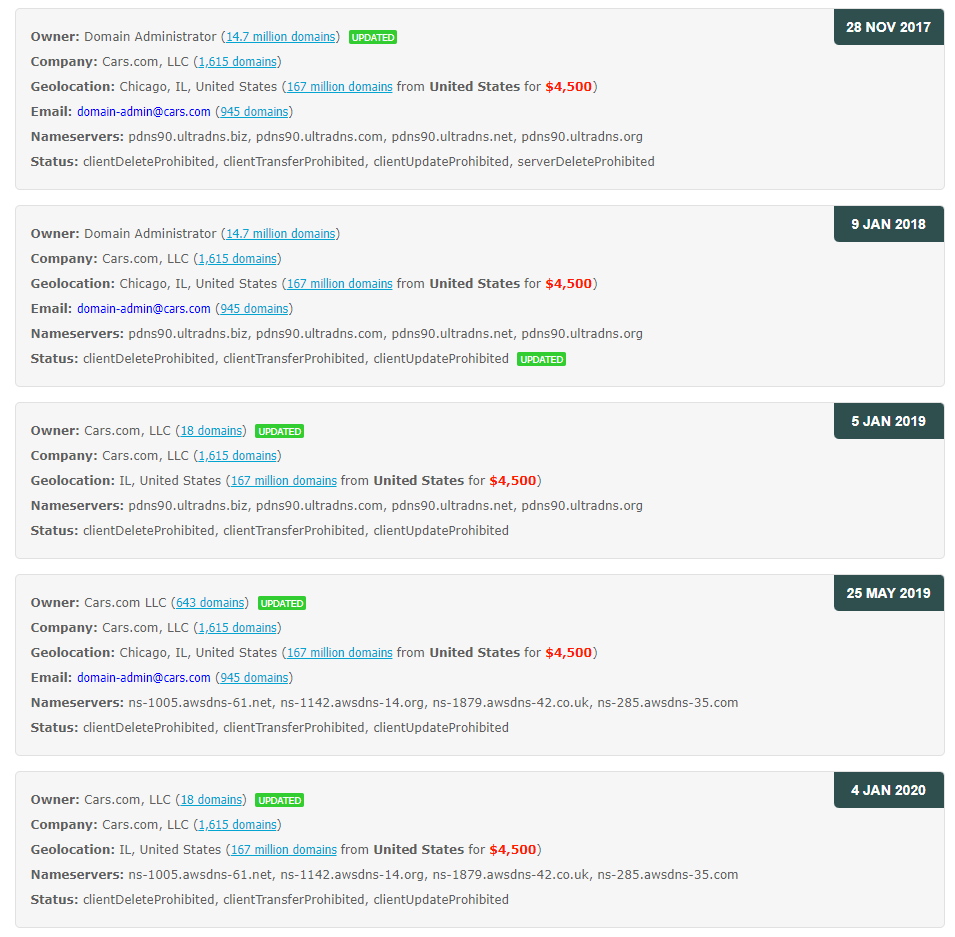
Use the Wayback Machine instead
of The Wayback Machine is a project of the Internet Archive, which is, you guessed it, an attempt to archive everything on the web, including old versions of websites. The Wayback Machine is whole We update websites regularly. Although we don’t update every day (and older websites may not display properly), we provide the best visual history of almost any website.
Old versions of websites can help you find content that’s no longer there (such as contact information that’s still valid), and can also help you see if the domain was used by the same person or company, or if it has changed hands several times over the years.
For example, take the online store manitobah.com, which at the time of writing looks like this:

And this is what it looks like November 18, 2018This is the earliest snapshot of a working website.
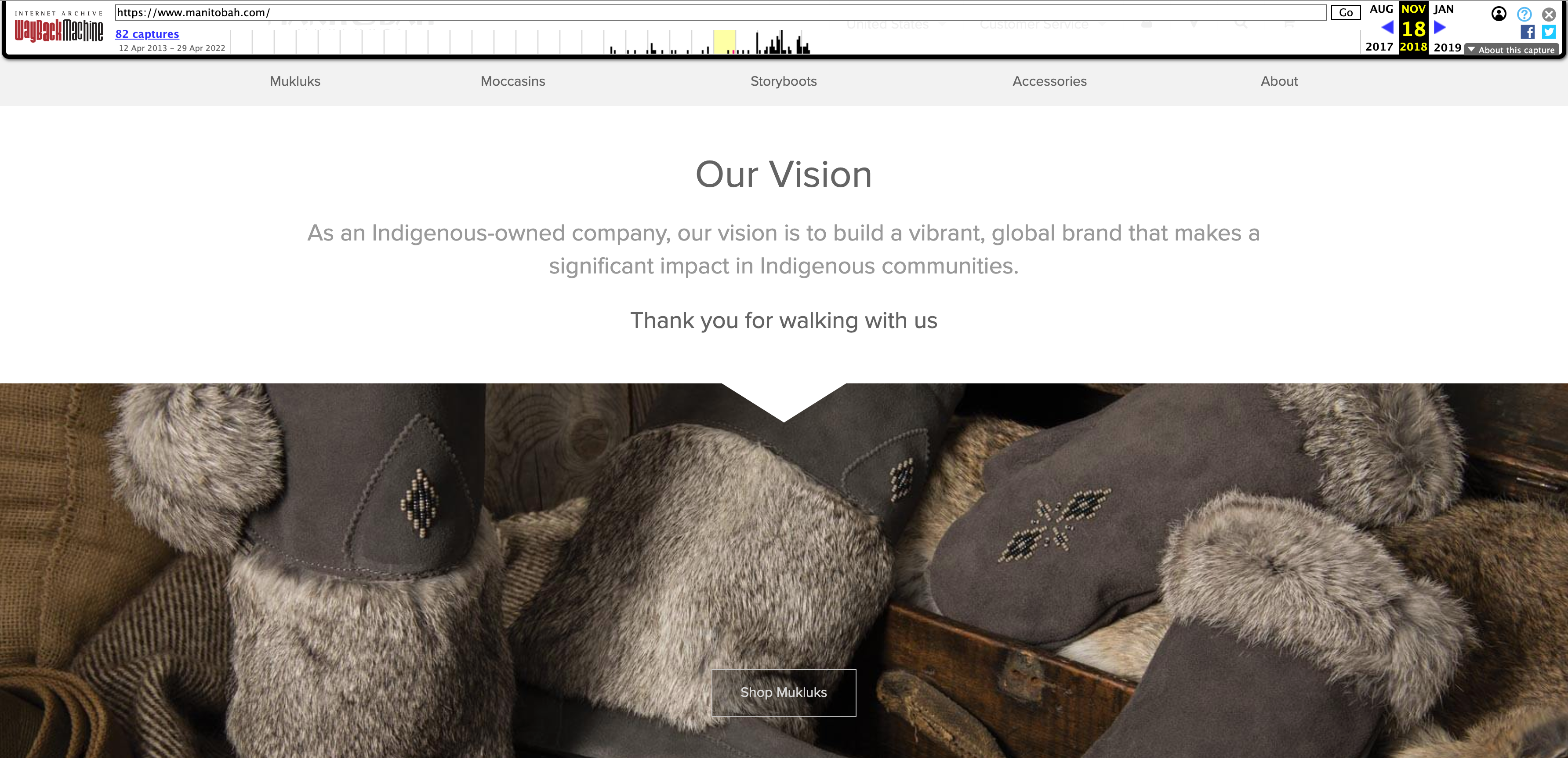
How is this useful? It turns out that this exact same company used this domain a few years ago. Plus, the older version of the site has historical information that’s not there, or at least harder to find, in the newer version, such as the address of their manufacturing headquarters on the contact page.
How to perform a Wayback Machine search
1. Visit archive.org
in particular, Web ArchiveYou can easily search for the domain you want, and you can also manually save pages and sites here to create a record for the future.
2. Search for the domain you want to check
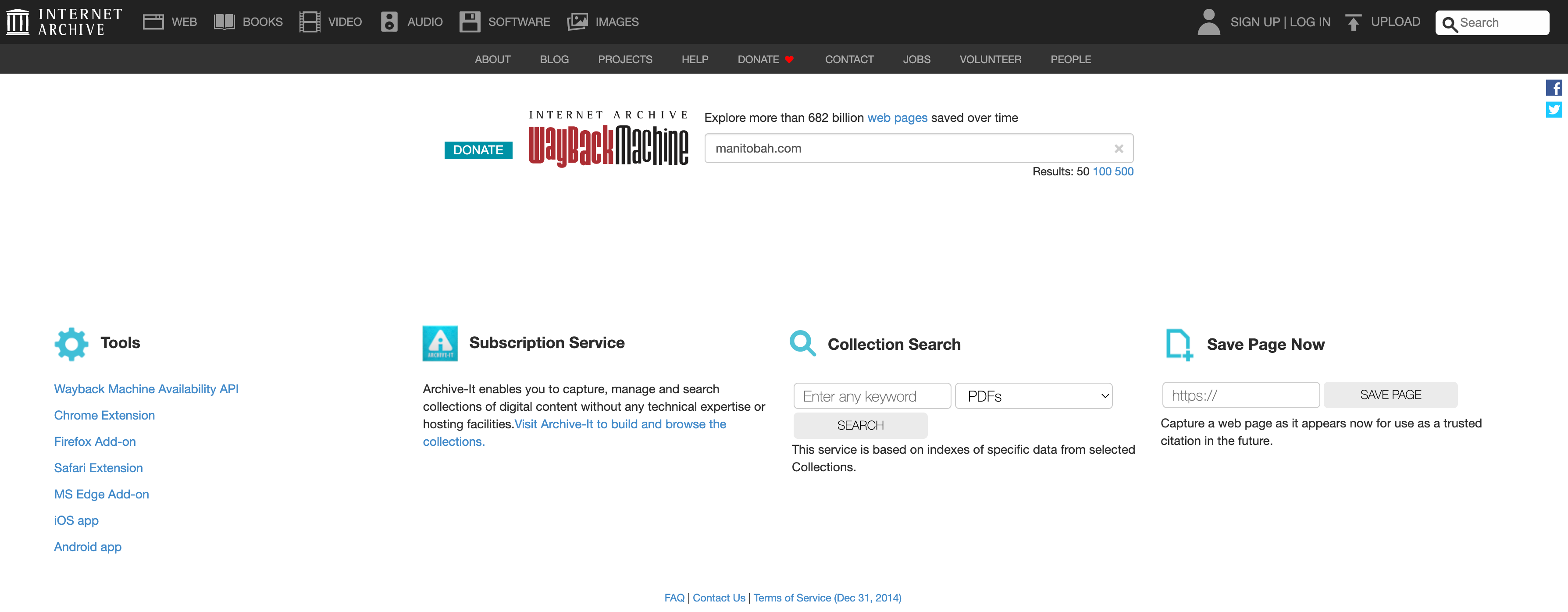
3. Select a snapshot from the calendar
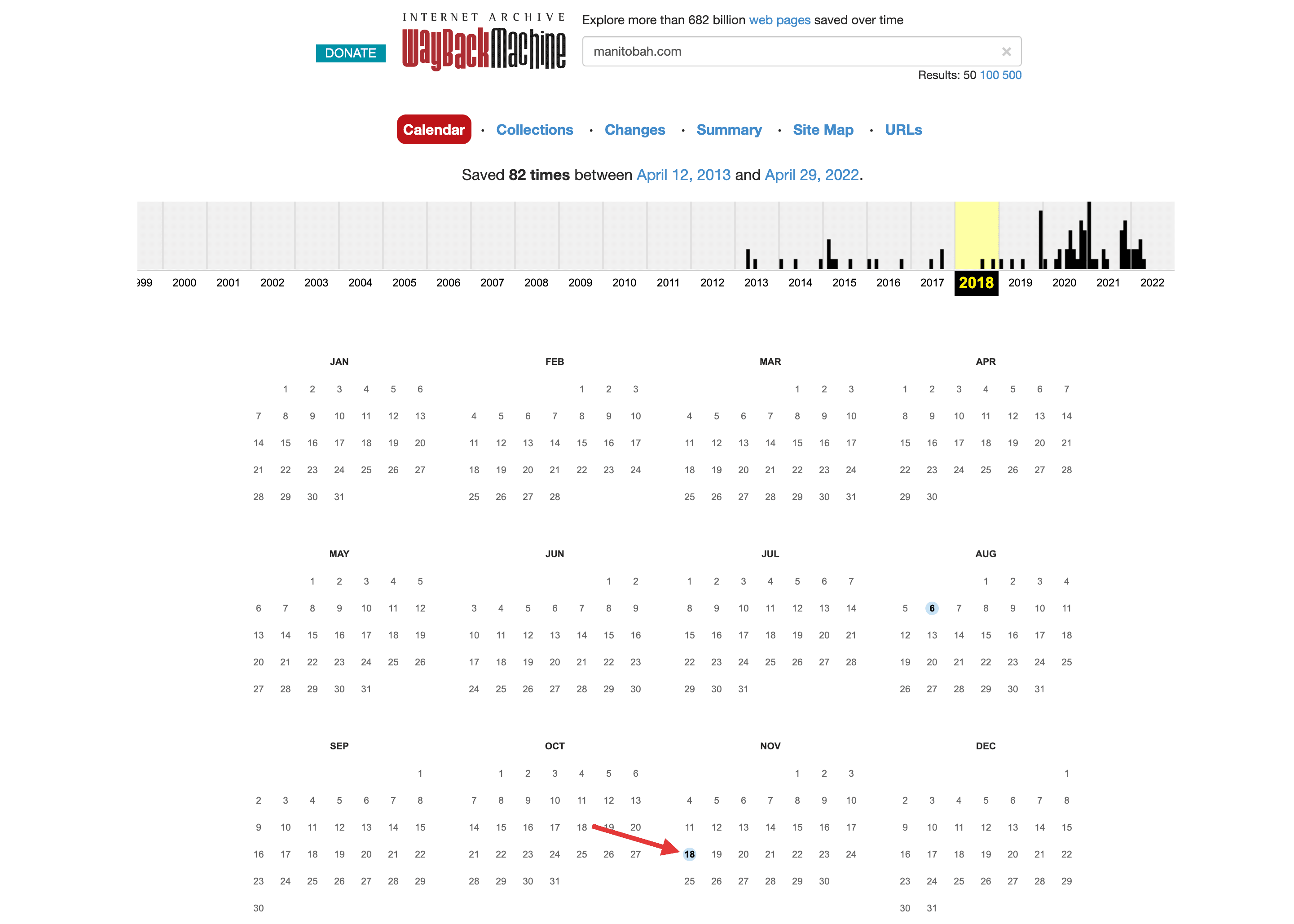
Select a snapshot date to see the older version of the domain you want to know more about. You can explore what the old site looked like and find relevant information.
More Tools and Tips
There are some easy and (mostly) free methods you can follow to analyze a domain’s history without having to hire a full-time researcher.
(See beginner’s guide here How to choose a domain name.
Start with Google (or your preferred equivalent)
A quick Google search (or use your favorite search engine) will reveal much of the information you need. If the domain has a significant history, it’s likely to be mentioned in reviews, website comment sections, forums, and anywhere else people gather to share opinions.
Check social media
You can also search for your domain directly on social media sites like Twitter to see what kind of attention your site is getting and what people are thinking about it. Searching directly on these sites is especially useful because not all sites make user posts available to search engines.
Ask in related communities
If the domain you’re looking to buy is part of an industry that lots of people are talking about, there are likely communities dedicated to that industry. Not all of them are easily searchable sites.
Find relevant Discord or Slack servers and look into in-person and virtual meetups for your industry. Simply ask people what they think about the domain in question and compile their responses.
Search for domains with Moz Domain Analysis
Moz Domain Analysis is a free tool that ranks domain names based on a variety of metrics, including traffic, backlinks, and various SEO checks. It then gives the domain two relevance scores. Domain Authorityand spam score.
Domain authority is a general indicator of a website’s chances of ranking highly in search engines based on the reputation of its content – the higher the score, the better.
The spam score is exactly what you would expect: the lower the score, the better.
”
Lastly, check your website’s backlinks
Through BacklinksHere you can find reviews (both positive and negative) of the website. If most of the backlinks come from social media, it may have an impact on your website. Social Media Marketing Strategy It shows you what individual customers think of your company, and it can also help gauge your domain’s SEO potential by seeing how many of your top links come from search engines.
Two Tools to See the Top Backlinks of Any Domain or subdomain and SEO and engagement tracking platforms SEMRush and Ahrefs.Notes: Only the top 100 or so backlinks can be checked for free.
Knowledge of domain name history is power
Researching a domain name’s history takes time, but it provides valuable information and is usually free.
Even if you can’t necessarily find contact information for the domain’s current owner, you can assess how popular the site is, the type of content it has had over the years, and whether it has a good digital or human reputation.
That knowledge can be useful if you’re buying a domain for your business, researching your competitors, or simply looking for ways to improve your website.
Domain History Check FAQ
What is Domain History?
Domain history (sometimes called WHOIS history or domain ownership history) is a list of a domain’s past and present owners, along with their addresses, contact information, and other registration information.
How can I check my domain history for free?
You can check Shopify’s domain history for free. WHOIS Domain Search Tools. Just enter the domain you want to search and click “Search.”
How do I find my domain history?
- Visit the WHOIS lookup service of your choice.
- Please enter your domain name.
- View the domain history.
What is the difference between Domain History and WHOIS?
WHOIS is the most commonly used protocol to find the registered user of a particular resource, usually a domain name. A WHOIS search provides information about the current owner of a domain, while the domain history keeps records of the current and previous owners.

